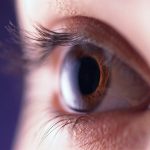
Antipsychotics can substantially increase dementia patients’ risk of many serious health problems, a new study warns. Dementia patients prescribed antipsychotics have increased risk of stroke, blood clots, heart attack, heart failure, bone fractures, pneumonia and kidney damage, researchers reported April 17 in the BMJ. “A move away from the overprescription of antipsychotics is overdue,” concluded the research team led by Pearl Mok, a research fellow with the University of Manchester in England. The study adds impetus to an ongoing investigation by the U.S. Centers for Medicare and Medicaid Services into the overuse of antipsychotic drugs in nursing homes. The investigation, announced last year, was launched in response to reports that some nursing homes might be falsely labeling patients as schizophrenic so they can be given antipsychotic drugs. For the new study, researchers analyzed data on nearly 174,000 people in England diagnosed with dementia between January 1988 and May 2018, at an average age of 82. More than 35,500 of those dementia patients had been prescribed an antipsychotic, and their health profiles were compared against up to 15 randomly selected patients who hadn’t used an antipsychotic. Antipsychotic use more than doubled the risk of pneumonia among dementia patients, researchers found. About 4.5% of dementia patients on antipsychotic drugs wound up developing pneumonia within three months of starting the meds, versus 1.5% of non-users. The drugs were also… read on > read on >






































